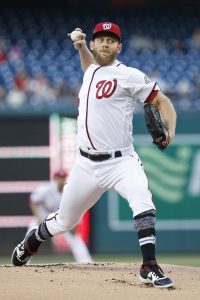June 4: Rodney’s deal with the Nats is official, per an announcement from Paul Braverman of the Fresno Grizzlies’ communications department (Twitter link). He joined the Grizzlies in New Orleans and is active for tonight’s game.
June 1: The Nationals have agreed to a minor league deal with reliever Fernando Rodney, according to Craig Mish of SiriusXM. Rodney will report to Triple-A Fresno.
The well-traveled Rodney was last with the Athletics, who designated him for assignment a week ago before releasing him on Tuesday. Even though Oakland had to eat the remaining $3.53MM on Rodney’s club option in moving on from him, the club decided the 42-year-old was no longer worth a roster spot. It was an understandable call on the part of the A’s, for whom Rodney turned in 14 1/3 innings of 9.42 ERA/5.52 FIP ball with 8.79 K/9 and 7.53 BB/9 this season.
While 2019 has been a nightmare for the arrow-slinging Rodney, he was a useful reliever between Oakland and Minnesota just a year ago. Since his career began with the Tigers back in 2002, the right-hander has notched a 3.79 ERA/3.77 FIP with 9.08 K/9, 4.48 BB/9, a 50.2 percent groundball rate, 325 saves and 96 holds in 899 2/3 innings.
Rodney’s typical production would be welcome in Washington, whose bullpen has been one of the majors’ worst this year. The Nationals haven’t been able to find solutions leading up to closer Sean Doolittle, and the Rodney signing is their latest low-risk attempt to repair their unenviable late-game situation. Rodney follows Jonny Venters and George Kontos as the third veteran reliever the Nats have brought in on a minors pact since last Saturday.

